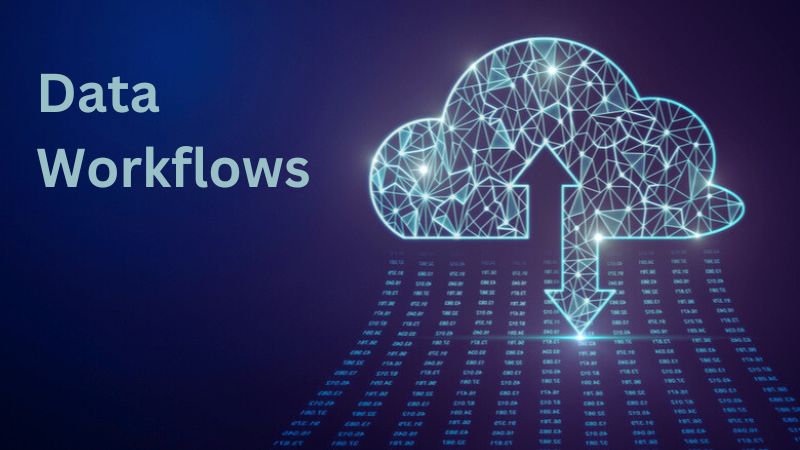Today’s modern organizations find cloud computing increasingly essential in the rapidly changing digital landscape. It gives them the adaptability, scalability, and affordability needed to conduct business internationally and develop quickly. It is more difficult for conventional cybersecurity techniques to keep up with more complex attacks, nevertheless, as a result of the move to the cloud. Because of these issues, AI is starting to disrupt cloud security and is revolutionizing how businesses protect their data, apps, and infrastructure. This paper examines the potential advantages, disadvantages, and bright future of AI-powered cloud security.
1. The Growing Challenge of Cloud Security
To identify malicious behavior, traditional cybersecurity technologies mostly depend on static rules and predetermined patterns. Unfortunately, these systems find it difficult to identify complex assaults, particularly those that are undetected or evolve quickly, due to the massive amount of data flowing via the cloud. The inability of malware, phishing, zero-day attacks, and insider threats to confirm established attack signatures allows them to evade traditional defenses. AI-powered cloud security excels in this gap.
2. The Role of AI in Cloud Security
Let’s have a look at where AI Business Solutions plays a very crucial role in Cloud Security.
- Real-Time Threat Detection: Algorithms using AI scan user behavior, systems records, and network traffic for patterns that may indicate an impending assault. AI systems employ anomaly detection, as opposed to static rule-based security technologies, to identify departures from expected behavior. For instance, an AI-powered system may identify unusual activity if an employee’s account begins to access files or systems that it typically doesn’t. In a similar vein, the system can immediately sound a warning or launch a preventive reaction in the event of an unusual rise in data transfer during odd hours.
- Automation of Security Tasks: Security incident manual processing can be laborious and prone to human mistakes. Many basic security operations, including monitoring logs, removing false positives, and responding to low-level threats, are automated by AI-powered cloud security solutions. Organizations may free up their cybersecurity staff to work on more difficult and important challenges by automating these operations. For instance, while the security team looks into the core cause, AI may immediately isolate hacked devices or accounts to limit additional harm. The time it takes to neutralize resides is significantly reduced by these swift, automated reactions, which is crucial in cloud settings where breaches may spread quickly.
- Behavioral Analytics and Insider Threat Detection: In addition to external danger, insider threats – whether deliberate or unintentional – are now becoming a significant worry for cloud systems. Workers who have access to important data may inadvertently create security holes by purposely using their access for nefarious ends. Artificial Intelligence is capable of analyzing behavioral data to create profiles of typical user behavior. The AI system can identify suspicious behavior and take appropriate action if an employee begins to behave differently than usual, for example, by accessing data they normally don’t handle or logging in from strange places. Before they cause a breach, this proactive strategy aids in detecting and reducing possible insider threats.
3. Challenges and Limitations of AI in Cloud Security
Although using AI-powered cloud security has many benefits, there are drawbacks as well :
- Data Privacy: Large volumes of data must be accessible for AI to be trained and to detect threats. This data may contain sensitive personal or corporate data in cloud settings. One major difficulty is making sure AI systems respect data privacy laws(like the GDPR) when they access such data.
- False Positives and Alert Overload: False positives occur when AI systems mistakenly identify harmless activity as possible dangers. Security teams become alert and fatigued as a result, missing real security threats in the deluge of pointless alerts.
- Cost and Complexity: It takes a lot of resources to implement security solutions driven by AI. The endeavor is expensive, especially for SMEs as it necessitates specialized infrastructure, substantial processing capacity, and trained labor.
4. The Future of AI-Powered Cloud Security
Looking ahead, the use of AI in Cloud security will only grow more crucial. Advances in edge AI, quantum computing, and machine learning algorithms will make cloud security more automated and intelligent, able to ward off even the most complex threats. AI will probably become more widely available in the future, enabling companies of all sizes to use cutting-edge security solutions. Moreover, AI will be essential in guaranteeing consistent, cross-platform security as businesses continue to use hybrid environments and multi-cloud strategies.
5. Some Github Actions
Here are some GitHub Actions designed to enhance cloud security with AI-driven solutions :
5.1 Automated Vulnerability Scanning
Using AI to rank threats according to their potential effects and severity, this Github Action continuously checks your cloud environment for vulnerabilities. it is scheduled to operate, gather information from network traffic and system logs, and use AI models to classify and find vulnerabilities. A report with remedial recommendations is included in the output. The security team can examine this report or an automated remediation tool can analyze it further.
'on':
schedule:
- cron: 0 3 * * *
jobs:
scan:
steps:
- run: security_scan_tool --scan --report
5.2 AI-Driven Anomaly Detection and Alerting
This operation uses AI to detect unusual behavior that might be a sign of a security breach while continually monitoring cloud activities. It captures and analyses real-time data on user behavior, network patterns, and access records, spotting departures from established standards. When abnormalities are found, the action sends a notification to the security team. The process may be set up to operate on a timetable or to start when certain things happen, including surges in high traffic or efforts to get illegal access.
'on':
push: null
jobs:
anomaly_detection:
steps:
'-steps':
- run: anomaly_detector.py --analyze --alert
5.3 Automated Threat Intelligence Updates
Cloud security depends on having up-to-date threat intelligence. By regularly retrieving and updating threat intelligence data from reliable sources, this activity makes it possible for AI models to learn about new dangers as they emerge. The updated data is then used by other processes or security systems, boosting the system’s responsiveness to emerging risks.
'on':
schedule:
- cron: 0 3 * * *
jobs:
update_threat_intel:
steps:
- run: update_threat_intel.py --fetch --update
6. Conclusion
AI-powered cloud security is revolutionizing cybersecurity by providing unseen levels of attack detection, response, and prevention capabilities. Organizations may increase productivity, lower the cost of security management, and defend their cloud infrastructures against contemporary cyber threats by utilizing AI. Even if there are still obstacles to overcome, cloud security will undoubtedly play a crucial role in the development of generative artificial intelligence making it a vital tool for every contemporary business.



